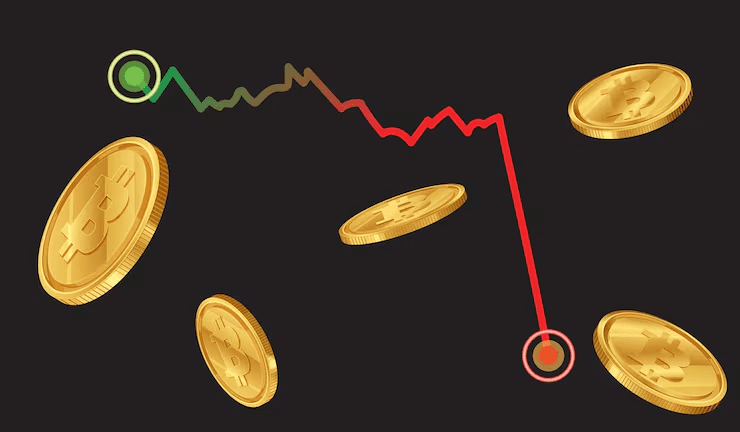Spot trading is a trading process where a trader buys an asset at the current market price and receives immediate delivery. The trade is live and payment is completed at the same time. In the spot market, both buyers and sellers trade at real-time prices. The process is simple and based on market movements.

Traders mostly use spot trading for short-term goals. The risk is low but the profit potential is also limited. Spot trading relies on a real asset exchange where the buyer trades the price of the actual product or index. It is a fast and transparent process that provides instant results in line with market fluctuations and every transaction is clear and verified.
The concept of futures trading
Futures trading is a contractual system where a buyer and seller enter into an agreement for a specific date. The delivery time of an asset is set in the future. The futures trader locks in the price now but receives the asset later. This trade is based on forecasting and market speculation. Futures trading is more complex and requires financial planning.
The trader needs to understand the leverage and margin system. This method is useful for both short and long term trading. Futures contracts are available on every exchange in a standard format. In this system, profit or loss is based on the difference in market price.
Price movement pattern
In spot trading, price movements depend on the current market supply and demand. The price changes every second and the trader takes action at that moment. In futures trading, price movements are based on expected market conditions and speculation. Futures contracts react to market sentiment and global events.

The spot market exhibits short-term volatility, while the futures market moves according to long-term trends. The spot trader deals on the actual price, while the futures trader bets on the predicted price. This difference in price movements determines the nature and stability of the two markets.
Liquidity level comparison
The spot market offers high liquidity where assets can be bought and sold instantly. Traders can easily enter and exit positions. Large traders and institutions are more active in futures trading, controlling liquidity. The spot market is easier and more accessible for beginners, while the futures market is suitable for professional and long-term traders.
Contract Settlement System
In the spot market, settlement is immediate where the buyer and seller complete the trade immediately. Both the asset and the payment are transferred immediately. In the futures market, settlement occurs at a future date where payment and delivery are made at the expiration of the contract.
This difference in the settlement system makes the process of the two markets different. Spot settlement is simple and straightforward while futures settlement is structured and planned. Settlement of futures contracts depends on the exchange and margin system.
Margin requirement factor
A margin system is essential in futures trading, where the trader deposits initial and maintenance margins. This margin creates leverage, which increases the potential for profit but also increases risk. Spot trading does not have a margin system because the trader pays in full and owns the actual asset.
Futures traders deal with the effects of margin calls and volatility. Spot trading is stable and provides a risk-control option for beginners. The margin system makes futures trading advanced and technical.
Using trading tools
Both spot and futures trading use advanced tools that improve decision-making. Chart analysis and volume studies are more in-depth in futures trading. Real-time data and liquidity tools are helpful in spot trading. These tools help determine the time to enter and exit the market.

Automated trading bots and AI signals are also becoming popular in both markets. Proper use of the tools improves trading results and reduces losses. Beginners should first familiarize themselves with these tools through demo practice and tutorials. This practice gives them better accuracy and confidence.
Key commercial benefits
Below are some of the major advantages of spot and futures trading that are useful for every trader:
- Spot trading provides instant results and liquidity.
- Futures trading is great for long-term growth and planning.
- Spot trading is simple and understandable for beginners.
- Futures trading is a strategic system for professionals.
- Spot trading offers a simple process and transparent transactions.
- Futures trading offers the opportunity to maximize profits.
- Spot trading is helpful for buying and selling options quickly.
- Futures trading is effective for hedging and forecasting.
- Both systems can become profitable with market knowledge and practice.
- Every trader should choose a system that suits their goals.
These benefits help to understand the potential of both trading methods.
The importance of strategic planning
Trading strategy is important in both systems, but the methodology is different. Traders consider news events and market cycles. Spot trading is reactive, while futures trading is predictive. Strategic planning is an essential element for success and risk control in both markets.
The ownership difference was explained.
In spot trading, the trader takes actual ownership and the asset is directly under his control. This trading is based on the actual value and the balance of supply and demand. In futures trading, the trader holds the contract, not the actual asset. In futures, delivery takes place later and actual possession is not taken.
This difference makes the two trading types different. Spot trading is simple where buyers and sellers deal directly with each other. Futures contracts involve a legal contract where the terms are set. This difference in ownership makes the goals and strategies of traders different.
Comparison of risk factors
The risk in spot trading is limited because the trades are made in real time. Losses or profits are reflected immediately with the price movement. The risk in futures trading is higher because leverage is used and there is a greater impact of market volatility. The trader predicts future prices which are uncertain.
The spot market gives stable results while the futures market is speculative in nature. Only experienced traders can manage futures trading effectively. Spot trading is a safe option for beginners. Understanding risk and capital management are essential in both systems.
Profitability perspective description
The profit structure is quite different in both trading styles. In spot trading, the trader buys the asset and sells it when the price increases. In futures trading, the trader predicts whether the price will increase or decrease. If the prediction is correct, the profit is made. In spot trading, the profit depends on the actual market movement.
In futures trading, the profit comes from the difference in leverage and price. The time is short in the spot system while long-term planning is required in the future. Profits depend on strategy and timing in both markets.
Learning Guide Overview
This section explains several subtopics for learning trading that are beneficial for both beginners and experts:
- Market Basics
It is important to understand the basics of the market before you start trading.
- Chart analysis
Reading charts and patterns is an essential skill for every trader.
- Risk Management
Understanding risk is essential for loss control and investment balance.
- Time selection
Trading sessions and times vary according to each market.
- Tools knowledge
Using indicators and software improves trading accuracy.
- Trading Psychology
Emotional control and discipline are part of every successful trader.
- Economic factors
Global events and financial news affect market movements.
- Practice Phase
Demo trading is the best way to gain experience.
- Long-term focus
Patience and a consistent willingness to learn are the secrets to trading success.
You provide a structured learning roadmap to the subheading trader.
Study of market behavior
Understanding advertised behavior is an essential step to exchanging victory. The spot advertisement reflects the coordinated activities of buyers and dealers. The prospects showcase speaks to the desires and feelings of dealers. Each financial occasion and political alter influences the heading of the advertisement. Spot exchanging captures short-term impacts, whereas prospects exchanging takes after long-term patterns.

Watching advertised behavior instructs dealers superior determination and timing. Paying consideration to worldwide records and product developments is supportive for dealers. This investigation builds exchanging teaching and confidence.
The part of showcase participants
In the spot advertise, buyers and vendors trade genuine resources. This showcase is straightforward where cost is decided by supply and request. In the prospects advertised, theorists and hedgers are dynamic. Theorists exchange contracts for benefit, whereas hedgers ensure themselves against cost changes.
The parts of members in both frameworks are special. In spot exchanging, genuine esteem is made, whereas in prospects exchanging, exchanging is done on desires of the future. This contrast clarifies the structure of the advertisement and the behavior of participants.
Time Skyline Aspect
Spot exchanging takes a short-term approach where exchanges are completed quickly. It gives dealers a moment to come about and quick liquidity. Prospects exchanging is a long-term and arranged preparation where contracts are settled at a future date.
It gives dealers with estimating and supporting choices. Spot dealers center on the current showcase whereas prospects dealers analyze showcase patterns. This distinction in time skyline clarifies the reason and benefits of both systems.
Conclusion
Both spot and prospects exchanging play a vital part in the money related framework. The targets and mechanics of both are diverse. Spot exchanging is coordinated and genuine, whereas prospects exchanging is legally binding and theoretical. Spot exchanging produces short-term returns and is simpler for apprentices.
Prospects exchanging is more appropriate for proficient dealers, where determining and hazard control abilities are fundamental. Both markets are valuable for money related development and expansion. Dealers ought to select a framework that suits their objectives and chance resilience.


